Garigal National Park
Learn more
Learn more about why this park is special
Garigal National Park is a special place. Here are just some of the reasons why:
Wildlife haven
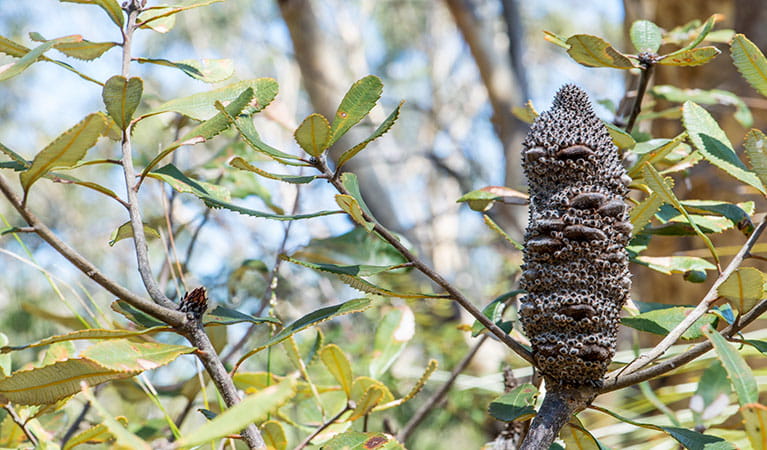
Garigal is part of an important wildlife corridor that spans all the way from Sydney Harbour to the national parks of the Blue Mountains. It's the natural habitat for a number of threatened native animal species, such as tiger quolls, broad-headed snakes and red-crowned toadlets, so keep your eyes peeled. If you see a hole in the ground it may be that of the endangered southern brown bandicoot.
- Cascades trail Cascades trail is ideal for walking, horseriding and mountain biking in Garigal National Park. A medium difficulty walk or ride along a fire trail, it traverses Middle Harbour creek.
- Hawkesbury to harbour walk: Stage 3 Join this great 7hr, 14km guided walk and explore Garigal National Park in northern Sydney. It's the third walk in a series of 5 walks.
- Hawkesbury to harbour walk: Stage 4 Explore the sights of Garigal National Park by joining this 7.5hr, 16km guided walk on the Sydney's lower north shore.
- Hawkesbury to harbour walk: Stage 5 Explore the sights of Garigal and Sydney Harbour national parks on this 11km guided tour. You’ll walk for 5.5hrs from the Spit Bridge to Manly, taking in some of Sydney’s most iconic coastline.
- Stepping Stone Crossing to Cascades trail Located in Garigal National Park, Stepping Stone Crossing to Cascades trail is an easy walk that you can enjoy by walking, horse riding or mountain biking.
Wartime stories
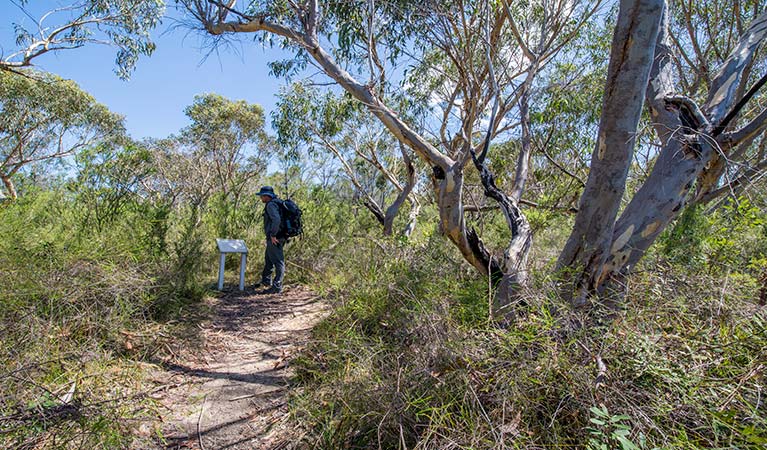
There are many places of historical interest in the park, such as Bungaroo and the former Bantry Bay Explosives Magazine complex. Both sites played a key role in the early establishment of Sydney and are important reminders of our history since colonisation. Enjoy a walk to Bantry Bay, where you'll see a collection of historically important buildings surrounded by stunning foreshore and bushland views.
- Hawkesbury to harbour walk: Stage 3 Join this great 7hr, 14km guided walk and explore Garigal National Park in northern Sydney. It's the third walk in a series of 5 walks.
- Hawkesbury to harbour walk: Stage 4 Explore the sights of Garigal National Park by joining this 7.5hr, 16km guided walk on the Sydney's lower north shore.
- Hawkesbury to harbour walk: Stage 5 Explore the sights of Garigal and Sydney Harbour national parks on this 11km guided tour. You’ll walk for 5.5hrs from the Spit Bridge to Manly, taking in some of Sydney’s most iconic coastline.
- Pipeline and Bungaroo tracks to Stepping Stones Crossing This short steep walk is one of the most beautiful on Sydney’s upper north shore. Beginning at St Ives, it leads you through Garigal National Park to Middle Harbour creek.
Rich Aboriginal heritage
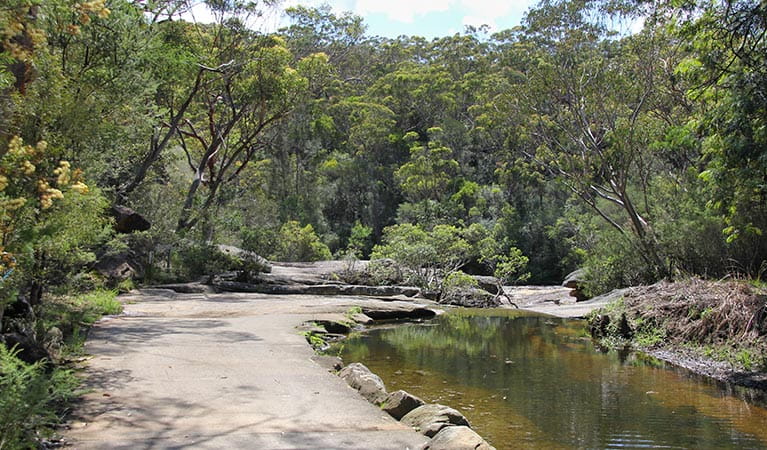
Aboriginal people have been custodians of the land in Garigal National Park for thousands of years and this connection and legacy is evident throughout the park. Garigal has extensive Aboriginal art sites, with over 100 Aboriginal sites recorded to date, including cave art, rock engravings, shelters, middens and grinding grooves.
- Hawkesbury to harbour walk: Stage 3 Join this great 7hr, 14km guided walk and explore Garigal National Park in northern Sydney. It's the third walk in a series of 5 walks.
- Hawkesbury to harbour walk: Stage 4 Explore the sights of Garigal National Park by joining this 7.5hr, 16km guided walk on the Sydney's lower north shore.
- Hawkesbury to harbour walk: Stage 5 Explore the sights of Garigal and Sydney Harbour national parks on this 11km guided tour. You’ll walk for 5.5hrs from the Spit Bridge to Manly, taking in some of Sydney’s most iconic coastline.
Outdoor action
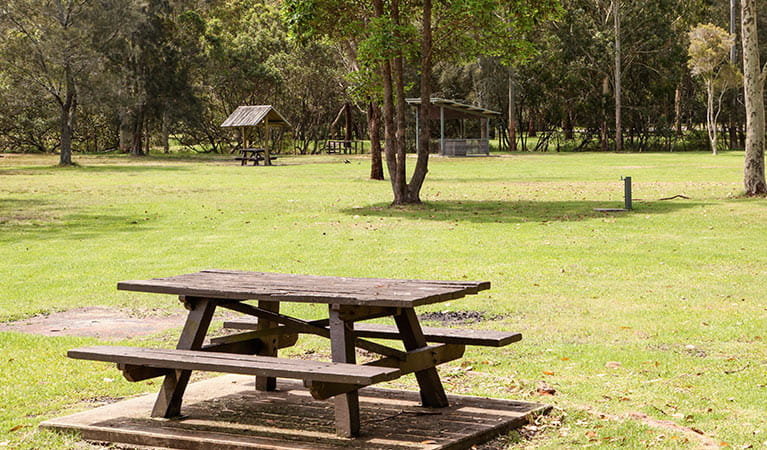
There are countless ways to pass the time in Garigal. Explore the park's trails and tracks on horseback, mountain bike or on foot. If you enjoy water activities, launch your canoe or boat from the ramp at Davidson Park or drop a line in one of the great fishing spots throughout the park, like Middle Harbour, where you can catch flathead, flounder, mullet and bream.
- Cascades trail Cascades trail is ideal for walking, horseriding and mountain biking in Garigal National Park. A medium difficulty walk or ride along a fire trail, it traverses Middle Harbour creek.
- Davidson Park picnic area and boat ramp If you're looking for something to do in Sydney, Davidson Park is a pretty harbourside park with boating and canoeing access, just a short drive from the Sydney CBD.
- Natural Bridge track to Davidson Park This challenging walking track winds through Garigal National Park, and features impressive sandstone rock formations and spectacular water views.
Plants and animals protected in this park
Animals
-
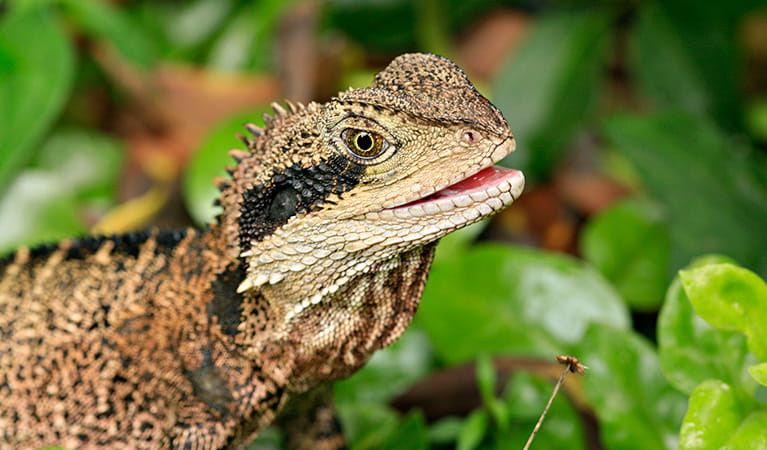
Eastern water dragon (Intellagama lesueurii lesueurii)
The eastern water dragon is a subaquatic lizard found in healthy waterways along eastern NSW, from Nowra to halfway up the Cape York Pensinsula. It’s believed to be one of the oldest of Australian reptiles, remaining virtually unchanged for over 20 million years.
Plants
-
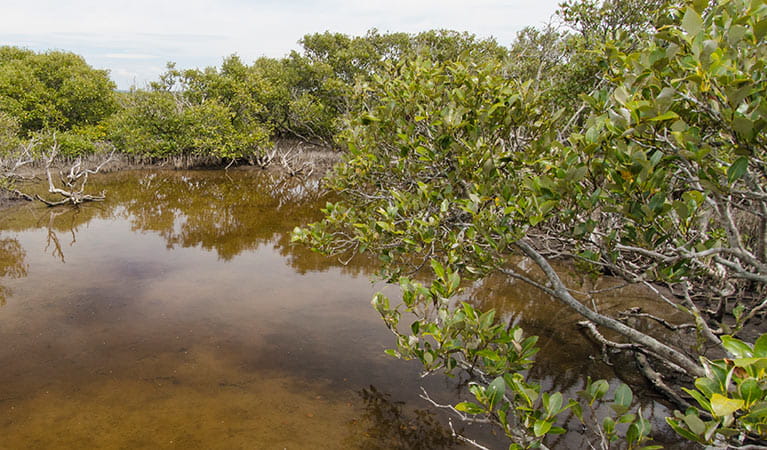
Grey mangrove (Avicennia marina)
Grey mangrove is the most common and widespread mangrove found within intertidal zones across Australia, and throughout the world. Growing to a height of 3-10m, they thrive best in estuaries with a mix of fresh and salt water. They excrete excess salt through their long thick leaves, and absorb oxygen through their aerial root system.
-
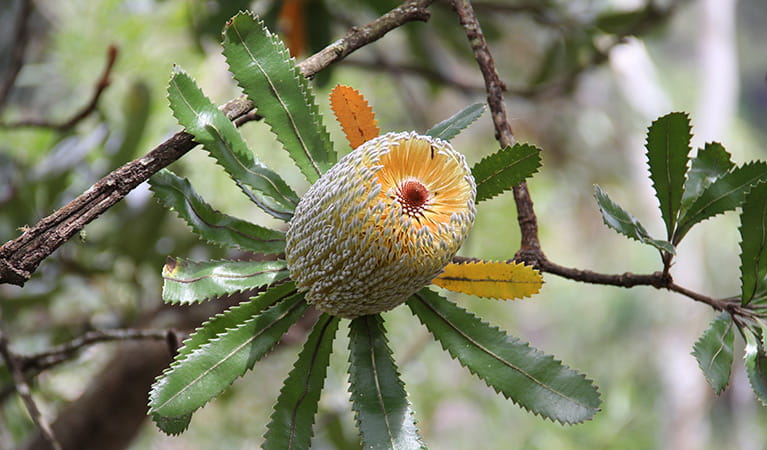
Old man banksia (Banksia serrata)
Hardy Australian native plants, old man banksias can be found along the coast, and in the dry sclerophyll forests and sandstone mountain ranges of NSW. With roughened bark and gnarled limbs, they produce a distinctive cylindrical yellow-green banksia flower which blossoms from summer to early autumn.
-

Grass tree (Xanthorrea spp.)
An iconic part of the Australian landscape, the grass tree is widespread across eastern NSW. These Australian native plants have a thick fire-blackened trunk and long spiked leaves. They are found in heath and open forests across eastern NSW. The grass tree grows 1-5m in height and produces striking white-flowered spikes which grow up to 1m long.
-
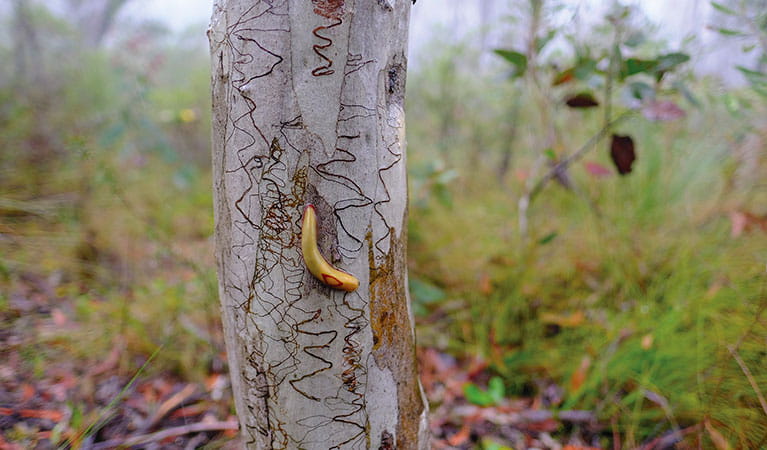
Scribbly gum (Eucalyptus haemastoma)
Easily identifiable Australian native plants, scribbly gum trees are found throughout NSW coastal plains and hills in the Sydney region. The most distinctive features of this eucalypt are the ‘scribbles’ made by moth larva as it tunnels between the layers of bark.
Look out for...
Grey mangrove
Avicennia marina
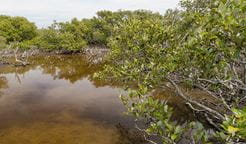
Grey mangrove is the most common and widespread mangrove found within intertidal zones across Australia, and throughout the world. Growing to a height of 3-10m, they thrive best in estuaries with a mix of fresh and salt water. They excrete excess salt through their long thick leaves, and absorb oxygen through their aerial root system.